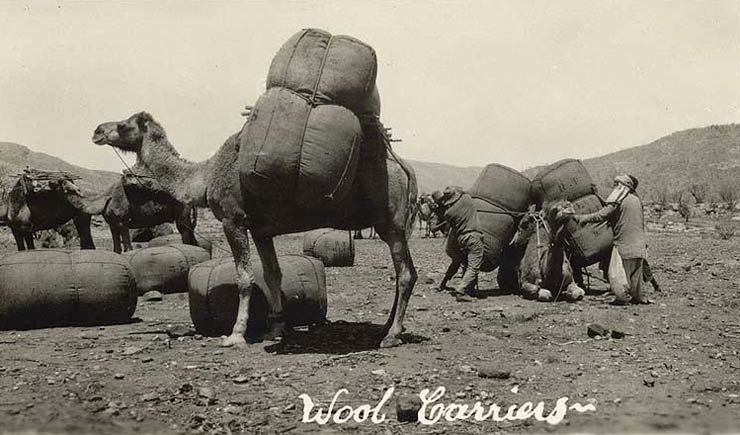 Loading camels, early 20th century
Loading camels, early 20th century
TLF ID R3026
This is a sepia-toned photograph measuring 10.3 cm x 5.0 cm, taken in outback Australia in the early 20th century, probably by John Flynn (1880-1951). The photograph shows three men, one of whom is an Afghan cameleer, loading a camel with two wool bales. A camel already loaded stands in the foreground with other camels behind. Wool bales lie on the ground waiting to be loaded. The label 'Wool Carriers' is handwritten on the bottom of the photograph.
